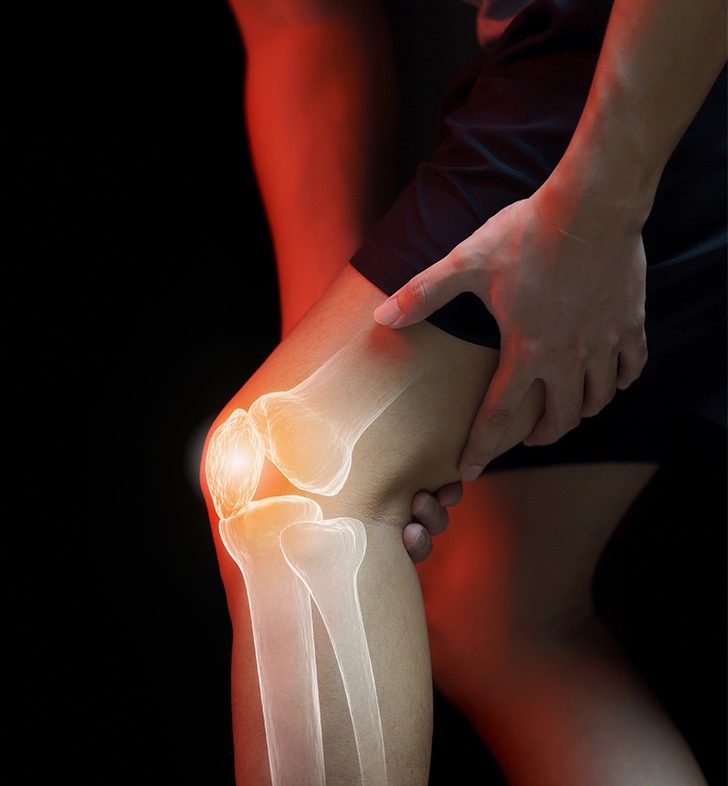
Adolescent Sports Injuries of the Knee
What causes adolescent sports injuries? Adolescent sports injuries fall into two types of trauma: micro (caused by repetitive trauma) and macro (from a single traumatic event). The adolescent is still growing. The growth plates are areas of cartilage (strong connective tissue) at the ends of long bones that help bones grow. Repetitive stress or sudden large forces can cause injury to these areas.
What are the sports-related knee injuries suffered by adolescents? In the adolescent knee, injuries include the following: Fracture (breaking of the growth plates): A fracture through the growth plate can be a very serious injury that can stop the bone from growing properly. These fractures may need surgery and should be treated by an orthopaedic surgeon. Osgood-Schlatter disease (pain at the knob just below the knee cap[tibia tubercle]): Overuse injury may occur because the adolescent is taking part in sports year-round. This type of injury responds to rest and changes in activity. Adolescents will outgrow Osgood-Schlatter's disease. Sindig-Larsen-Johansson disease (pain at the lower pole of the knee cap[patella]): This disease is caused by overuse and is treated with rest. Adolescents will outgrow it. Osteochondritis dissecans (separation of a piece of bone from its bed in the knee joint): This injury is usually caused by one major macro event (from a single traumatic event), followed by repetitive macro trauma that prevents complete healing. This injury is potentially very serious. Treatment ranges from rest to surgery. Bipartite/multipartite patella: Results from failure of a bone growth center to fuse normally. Rest is the first line of treatment, but if pain persists, surgery may be needed . Anterior knee pain: Anterior knee pain, or patella femoral syndrome, is often passed off as growing pains. Causes include overuse, muscle imbalance, poor flexibility, poor alignment, or, more commonly, a combination of these. Anterior knee pain is one of the most difficult adolescent knee injuries to sort out and treat. Accurate diagnosis and treatment depend on finding a musculoskeletal specialist with a special interest and expertise in this difficult area. Patellar instability: Patellar (kneecap) instability can range from subluxation (partial dislocation) to dislocation with fracture. Partial dislocation can often be treated conservatively. Dislocation with or without fracture is a much more serious injury and usually will require surgery. Knee ligaments and the menisci (cartilage between the leg bones): Knee ligaments and the menisci have greater blood supply and are more elastic in adolescents than in adults. As adolescents near the end of bone growth, their injuries become more adult-like and the adolescents become more prone to meniscal and anterior cruciate ligament (ACL) injuries. Medial collateral ligament (MCL) injury: This injury results from a lateral (side) blow to the knee. Pain is felt on the medial (inner side) of the knee. MCL injuries respond well to protective bracing and conservative treatment. Anterior cruciate ligament (ACL) injury: This injury is most often caused by twisting the knee, colliding with someone, sudden stops while running, or jumping and landing awkwardly. Non-contact injuries of the ACL are becoming more common than contact injuries. Adolescent females are at high risk. Combination injuries with MCL or menisci are common. Surgery to repair a torn ACL is needed if the adolescent wishes to continue take part in "stop-and-start" sports. Meniscal injury: This is an injury to the meniscus, the crescent-shaped cartilage between the thigh bone (femur) and lower leg bone (tibia). These injuries usually result from twisting. The knee will often swell, catch, and/or lock. Nearly all of these types of injuries will require arthroscopic surgery.
How are adolescent knee injuries diagnosed? In most cases, a good history and physical exam by an adolescent sports medicine expert will provide an accurate diagnosis. The physician can make the diagnosis by taking the patient's medical history, including any previous injuries, as well as a family history of similar injury, and by performing a physical exam. The adolescent's age, gender, and level of participation in sports are also important. The physician will want to know how the injury occurred (if there was a "pop," swelling, if the knee locked or gave way), and other signs or symptoms. While special tests can be helpful, in certain circumstances an accurate diagnosis can be made 90 percent of the time by taking a good history and performing a systematic exam of the knee.